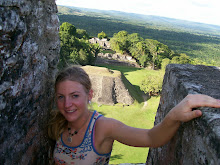
Using the Population Density Map (previous post), I compiled the information and did further research to analyze the patterns. One of the reasons population was denser in places in Central America like Belize was because of increasing accesbility by the United States (due to US-Central America relations) in ways such as tourism, American investments, etc. Tourism (as well as Americans buying second homes) in Central America (specifically Panama and Belize) until about a decade ago in Belize due to their politics. Recently, however, Prime Minister Dean Barrow’s United Democratic Party (UDP) won the general election in Belize on February 7, 2008 (www.udp.org). As a result, a new Minister of Tourism, Manuel Heredia, was appointed. Heredia is a politician with prior marine biological experience in the fishing industry. With a concentration on fisheries, he served as Chairperson of the Fisheries Advisory Board and Vice-President of the Belize Fishermen's Cooperative (www.udp.org). His current focus is “furthering the growth of tourism by expanding economic opportunities for all stakeholders and by building strong partnerships with the private sector” (www.caribbeanpressreleases.com).
The Population Density map also triggered my interest in demographic informaiton (as mentioned, a layer of demographic data would be very useful to that interface), so I did some research on demographic information on Central American countries, like Belize to draw further inferences.
Demographics
Belize is the most sparsely populated nation in Central America with about half of the population living in rural areas and about one fourth of the population living in Belize City (www.governmentofbelize.gov).
According to the Belize 2000 Housing and Population Census, about 34% of the population is of mixed Maya and European descent (Mestizo), 25% are Kriols, 15% Spanish, and about 10.6% are Mayan. Contrary to the popular believe that a large portion of Belize’s population is Garifuna (personal nterview with Irma Ramos, resident of La Democracia and certified tour guide in Belize) and Bacas (La Democracia resident) only about 6.1% are Afro-Amerindian (i.e. Garifuna). The remaining population of Belize consists of European, East Indian, Chinese, Middle Eastern, and North American groups (Belize Central Statistical Office, 2005).
As a result, it is useful to due further research and look at other patterns that correlate the main variables demonstrated in most graphic data (ie population density) to make connections and delve further into your research question.

No comments:
Post a Comment